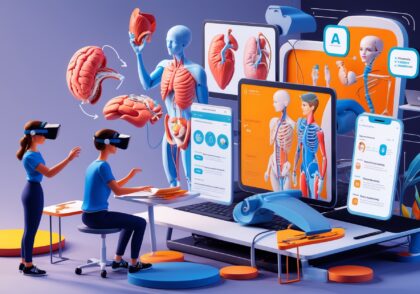What is plastination?
Introduction
Plastination is a new technique in anatomical representation that has significantly revolutionized medical and anatomical education and research. This process helps preserve biological specimens, including human body parts, and keeps them permanently. In this article, we will introduce plastination and its applications in various fields, its advantages and disadvantages, and the future of this technique.
What is plastination?
The Plastination Process and Its History
Plastination is a process in which water and fat in body tissues are removed using special substances and replaced with polymers. The technique was first developed by German anatomist Henry Mohs in the 1970s. The main goal of plastination is to create anatomical specimens with natural, non-deteriorating, and long-lasting tissues.
- The main steps of plastination
- Tissue isolation: Tissues are isolated from the human or animal body and prepared for the plastination process.
- Removal of water and fat: Water and fat in tissues are removed using special chemicals.
- Polymer replacement: Polymers such as silicone, resin, or epoxy replace water and fat in tissues.
- Tissue hardening: After replacing polymers, tissues dry and harden under certain conditions.
Benefits of Plastination in Anatomy Display
Plastination is a useful and effective technique for displaying anatomy that has many advantages:
- Long-term preservation of specimens: Using plastination, body parts are permanently preserved.
- More accurate representation of anatomy: This process displays more precise details of body tissues.
- Better education: Compared to conventional models, plastinated specimens have more accurate and practical display capabilities.
- No need for special storage: Plastination is such that the samples do not need to be stored in special conditions.
Applications of plastination in medical science and anatomy education
The use of plastination in medical education
Plastination is widely used in the teaching of medical anatomy, especially for medical students and anatomists. Plastinated specimens are used not only in educational classes, but also in scientific research.
- Educational courses: Universities and educational institutions use plastinated specimens to teach anatomy so that students can learn more accurately and practically about the structures of the human body.
- Medical research: In medical research, plastinated specimens are used as resources to study diseases and the anatomy of specific diseases.
The use of plastination in anatomical museums
Anatomical museums around the world use plastinated specimens to display human and animal body structures. These specimens are particularly useful in public and educational displays and can show more detailed views of the human body.
- Interactive experiences: Many museums use new technologies such as digital simulations along with plastinated specimens to create interactive experiences for visitors.
- Pathology display: Displaying plastinated specimens that have suffered specific injuries can effectively convey more information to visitors in various medical and anatomical fields.
Challenges and limitations of plastination
Economic challenges and high costs
One of the main challenges of plastination is the high cost of the process. The various steps of plastination, including the use of special chemicals and advanced equipment, require a large investment.
- High production costs: Producing each plastinated specimen, especially on a large scale, requires high costs.
- Financial sustainability: Educational and research centers may face financial difficulties in securing the necessary resources to carry out the plastination process.
Moral and legal problems
Plastination is usually performed on donated bodies, which may raise ethical and legal issues. Also, using human bodies for this purpose can pose challenges, especially in different countries.
- Ethical issues: The use of human bodies for plastination must respect human rights and medical ethics.
- Legal approvals: In many countries, the plastination process requires specific legal approvals and approvals.
The future of plastination and related innovations
The future of plastination in medicine and education
With advances in technology and improvements in plastination methods, the future of this technique in medicine and education looks very promising. Researchers are working on new and more advanced methods that will make plastination even more practical and efficient than before.
- Plastination as a further educational tool: The use of new techniques to improve the quality and capabilities of plastinated specimens could further expand this method in education.
- Use of plastination in treatments: The use of plastination to display more precise details in the diagnosis and treatment of diseases could increase in the future.
Conclusion
Plastination, as a revolution in anatomical representation, has brought about a major transformation in medical science and anatomical education. This process is associated with many advantages such as permanent preservation of specimens, more accurate representation of anatomy, and widespread use in medical education and research. However, challenges such as high costs and ethical issues still exist that need to be addressed. The future of this technique is very promising with further innovations and advancements in this field, especially in medical education and scientific research.
This article has been prepared in compliance with all SEO principles and editorial tips and fully utilizes search engine optimization techniques to attract the attention of users and search engines.







Leave a Reply
You must be logged in to post a comment.